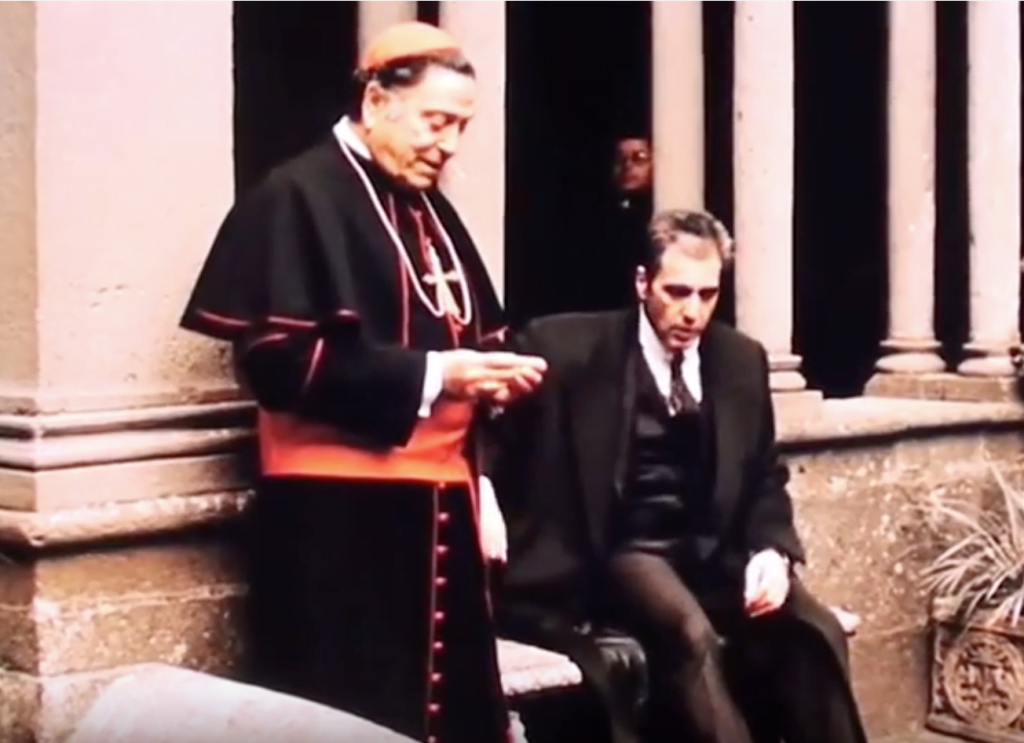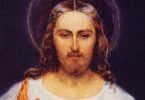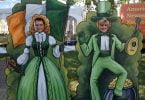
by Joe Bollig
In a 1991 interview with Bob Costas, actor Robert Duvall said the reason “The Godfather Part III” was made was simply because of the money.
Ultimately, he turned down a part in the film to reprise the character Tom Hagen, because the producers didn’t offer him what he felt was a sufficient salary.
“I just wanted some slice of the pie, otherwise why do it? Because everyone was doing it for money,” said Duvall. “When you see the movie, it’s not as good as the first two.”
Admittedly, he’s right about it not being as good as the first two, but this film has one of my favorite scenes of the “Godfather” trilogy.
It’s the scene when the godfather Michael Corleone meets in a courtyard with Cardinal Lamberto, a faithful and true Christian cleric (and, unfortunately, about the only one in the film).
The scene is full of Catholic symbolism and wisdom about sin, repentance and human nature.
There are two significant things that happen during this scene.
One is a point Cardinal Lamberto makes to Michael about men who are exposed to the Gospel but resist grace, and the danger of having a superficial faith.
The cardinal walks over to an ancient fountain. He reaches in a pulls out a wet stone.
“Look at this stone,” he says. “It has been lying in the water for a very long time, but the water has not penetrated it.”
And then the cardinal cracks it open.
“Look,” he says. “Perfectly dry. The same thing has happened to men in Europe. For centuries they have been surrounded by Christianity, but Christ has not penetrated. Christ does not breathe within them.”
Cardinal Lamberto is talking about two things. He’s talking in general about people who have been bathed in the Christian faith but have resisted grace and have not let it infuse their souls. And he’s also talking about Michael, who has chosen sin over grace. Here, the cardinal is playing the part of the Old Testament prophet Nathan, who convicted King David by saying, “That man is you.”
The second significant thing is that Michael, burdened by a guilty conscience, makes a sacramental confession after some gentle prodding by the cardinal.
First, Michael says he doesn’t want to take up the cardinal’s time.
“I always have time to save souls,” says the cardinal.
Then, Michael says he’s beyond redemption, and “What is the point of confessing if I don’t repent?”
“I hear you are a practical man,” replies the cardinal. “What have you got to lose?”
Michael confesses his worst sins, shows his woundedness, and cries.
The cardinal pulls no punches.
“Your sins are terrible, and it is just that you suffer,” says the cardinal. “Your life could be redeemed, but I know that you don’t believe that. You will not change.”
So, what’s going on here?
Redemption is possible for Michael — didn’t even the Good Thief on the cross repent and gain salvation? And yet, the cardinal recognizes that even though Michael suffers the guilt and pain of sin, he lacks the faith to repent and will not change.
That’s because Michael is like the stone from the fountain. He resists Christ’s grace even now as he recognizes his awful state.
And here’s a great lesson about living the Christian life.
When we live a Christian life and draw grace from the sacraments, we are building up habits of virtue. When we live a life of sin and disobedience and resist grace we are building up habits of vice.
By our own choosing we wear a groove that becomes a path to either heaven or hell. There is no third option.
It’s not impossible that one can grasp the gift of grace from God and change one’s path, but the habits of sin can be so ingrained that we dig the groove deeper and deeper until we can believe that we can’t repent, or find it very difficult to repent — or worst of all, don’t want to repent.
Many tragic scenes are played out in the “Godfather” trilogy. To me, the most tragic is in that courtyard, when a man comes so close to repentance but in the end cannot overcome his reflexive habits of sin. Hell seems to be not only his destination but his choice.
This should lead each one of us to ask ourselves this paramount question: What path do I make?






